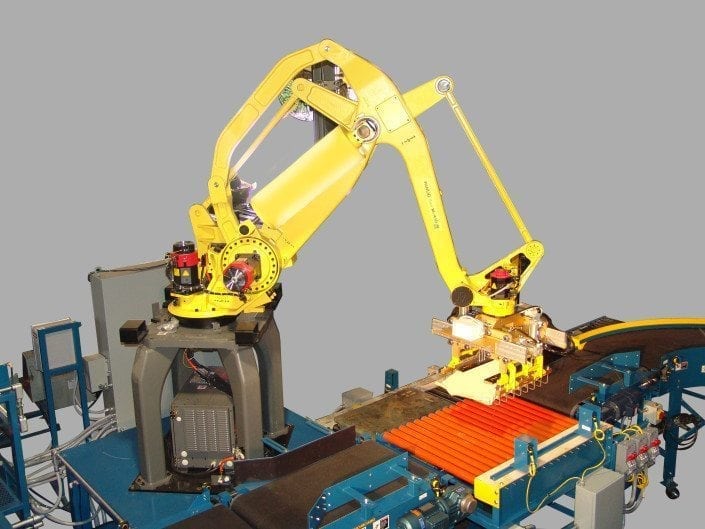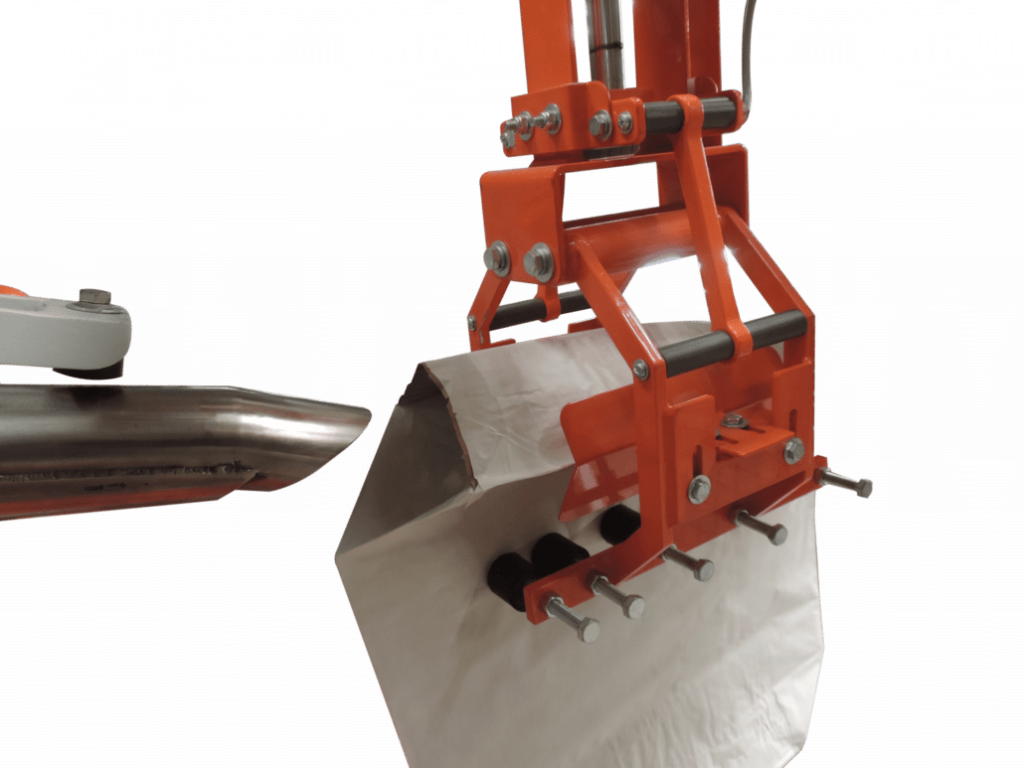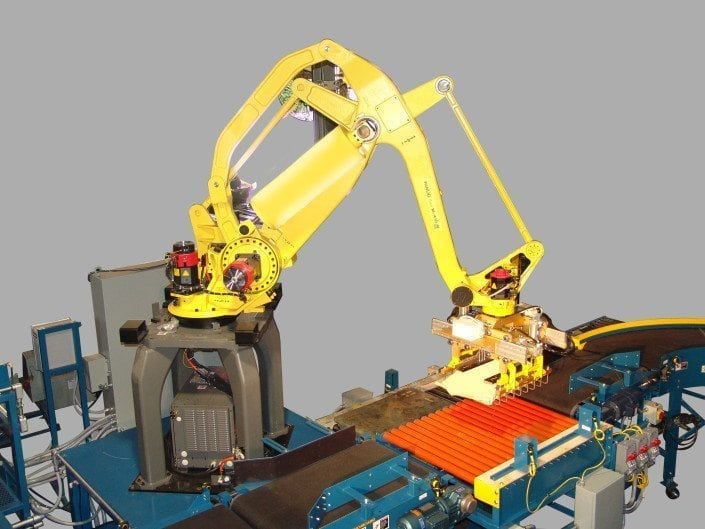An automatic bagging machine in this day and age is truly a marvel. Even so, an automated system isn’t right for every situation. I’ll explain the pros and cons of automation in the bagging plant.
Not only is it possible to run an entire packaging line with a single operator that used to be staffed by a large crew, but the wealth of data that can be obtained to continuously refine and improve system performance is unparalleled relative to what was possible even a decade ago.
It is possible to access, control, and diagnose machinery that is located anywhere on the globe via computer. Automated bagging machinery can tell us what it is doing and when it is doing it with a high degree of precision. It can be programmed to do just about anything that the mind can conceive.
Automation can be an Accelerator for your Business
You see, I believe that automation is an accelerator. By this, I mean that an accelerator is a form of lever, something that generates a larger result relative to the amount of force applied to achieve it. Automation as an accelerator can take various forms.
Is Faster Always Better?
It can literally make things go faster, they can pace work so that a consistent level of productivity is maintained over time or it can free a worker’s time so that the worker can be doing literally two things at once. But accelerating a flawed process with automation will not necessarily fix or correct the underlying issues in that application.
Accelerating a flawed process, as I hope to describe to you in the rest of this article, only shines a brighter light on existing issues that plagued productivity before automation came along. Automating the wrong process can make existing problems bigger faster.
Automated Bagging Systems are Not For Everyone
Over the years of building, supplying, and servicing automatic bagging machines I have come to understand that automation is not for everyone. What I am about to say about automated bagging machinery might sound like a rail against it and to attempt to convince you that automating is a bad idea and that everyone keeps things manual. This could not be further from the truth. My company is a strong proponent of and advocate for automation.
When Manual is a Better Choice
But I have learned that the correct conditions for automating a bagging line must exist to ensure the success of the investment. Operating conditions, bags designed for use with automation, and availability of personnel with the needed skills to operate the new system are all critical components of a successful installation.
Fatal Flaw #1: Continuously Changing Variables
Most current automation options that are economically feasible for most operations do not lend themselves to change or the introduction of continuously changing variables. Automation likes to do a repetitive task the same way over and over and over. If you have multiple products, multiple bag sizes, multiple products that have changing characteristics or changing environmental conditions might want to put some serious thought into how that automation will perform in your specific application.
Remember that automation (at least today’s automation) cannot make judgement calls about what to do in a given circumstance. It is programmed to do one thing the same way over and over. So if you have changing variables and flux in your operating environment, it likely isn’t a good environment or automation either.
Fatal Flaw #2: Poor Working Conditions
An automatic bagging machine does not operate well in a dirty environment. Yes, there are some things that can be done to “harden” a robot or other automation for dirty environments (like an air purged jacket for instance) but these things are not a guarantee to fix or solve the problem. And it’s not that necessarily that it won’t operate or that it can’t do the job in dirty environments. But over time, the dust and dirt will get all over the moving parts of the equipment and cause premature wear and tear which can result in higher than expected maintenance costs and downtime if not appropriately planned for.
In my view, adequate dust collection to remove and eliminate all air born dust is critical. A routine cleaning regiment should be implemented to prevent dust and dirt from accumulating on moving parts such as air intakes, air cylinders, rotary joints, rollers and belt drives.
Unlike people, an automatic bagging machine (at least today) does not heal itself. A person goes home at the end of the day perhaps tired and sore. But they relax, they sleep and they recharge on their own before the next step. A machine can’t do that on its own. People must tend and care for it on a regular basis. If this is not a commitment the plant is willing to make, the likelihood of failure of automation in the application will be high and the likelihood that the plant will have an unfavorable experience with their automated bagging machinery will be equally as great.
Bottom line, good to exceptional dust collection systems and housekeeping is critical and essential to making your upgrade to automated packaging machinery a success.
Fatal Flaw #3: Poor House Keeping and Maintenance
Automatic bagging machines must be regularly serviced and maintained to deliver an optimal level of performance. For simple manual equipment, especially if spare parts are kept in stock, it is perhaps not critical if a machine is run to failure (break down).
Usually, component failure on manual equipment causes a work stoppage but other than that maintenance personnel can be called relatively quickly, the fixes are easy to diagnose and repair.
Component failure on an automatic bagging machine is a different story. In addition to an unexpected work stoppage, with components that move automatically often times at high speed, an automated bagging machine that is not properly maintained can be a hazard to itself and workers in the area. A $5 part could cause thousands of dollars of damage if it causes a crash of two assemblies moving at high speed. To speak frankly, if you think that somehow it is not reasonable to regularly service your equipment and prefer to run to failure of a part in order to keep maintenance costs to a minimum, you should not automate.
Just like you would not ever fly with an airline that was in the habit of only maintaining their airplanes when they broke (if they were able to stay in business that way), automated bagging machinery should be serviced and maintained with a similar level of dedication and commitment. Regular and regimented maintenance is critical and essential to preventing unplanned downtime and keep the equipment running at its peak level of performance.
Fatal Flaw #4: Assigning Unqualified Personnel to Operate and Maintain the System
Automated bagging machines require a more skilled and technically savvy operator than a manual packing line. Manual bagging machines usually can be operated by operators with little to no experience or education. Controls are usually little more than start and stop pushbuttons. An operator can be taught to use the machine within minutes. The control systems of manual bagging machines are usually limited to motor starters, relays, and solenoids. Items that a typical plant maintenance person is very familiar with and works with on a daily basis.
Automated bagging machinery is becoming increasingly more and more sophisticated and requires operators and maintenance personnel with more training and experience. Automated bagging machines often include servos, stepper drives, virtually always a PLC, and communicate over Ethernet.
None of this is rocket science, but if your plan to install a machine that is controlled by this type of technology and your personnel isn’t trained and skilled in their operation, you need to be prepared for the learning curve that will follow or consider the possibility that you will need new and different people than those you have traditionally employed to operate and maintain your new packaging equipment.
Finding the Right Home for your Automatic Bagging Machine
In summary, automated bagging machinery certainly offers the ability to increase production and efficiency. Automation offers the possibility to be able to do more with less and the ability to produce more, better, cheaper, and faster than ever before.
However, to be successful, a plant must have the right philosophy regarding how to implement automation and enter the project with the right attitude, commitment, and mindset.
Automation is an accelerator. It will only produce more of the same quality that was possible before (assuming it is inserted into an old existing process). If there are continuously changing variables in the application, the risk of problems will be elevated. The operating environment needs to be conducive to automation and good and regular housekeeping is a must. A regular maintenance regiment must be put in place and plant personnel properly trained on its operation and maintenance.
If you want to discuss bagging solution options at your plant, we’d welcome the opportunity to offer our expertise.





Recent Comments